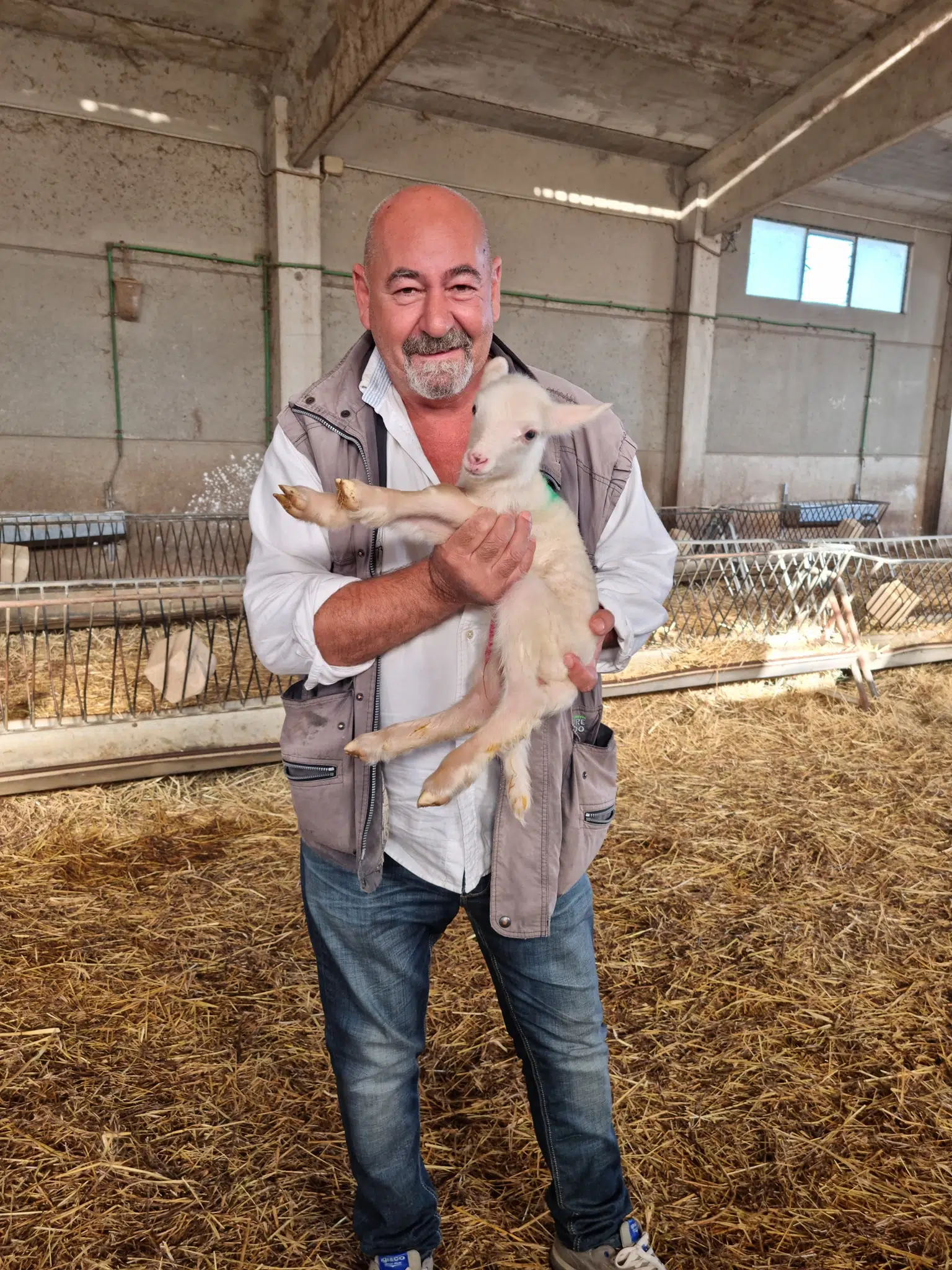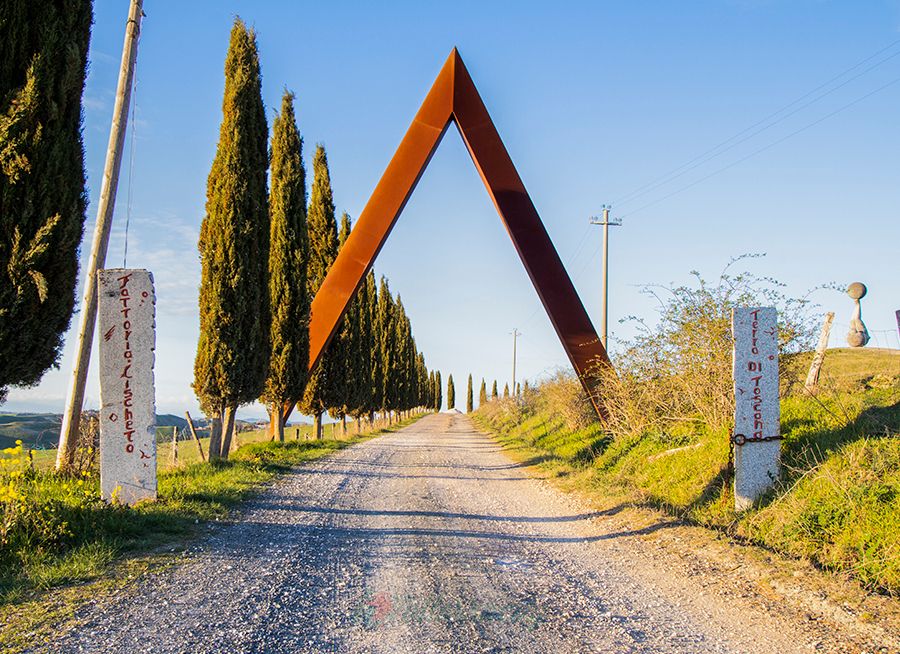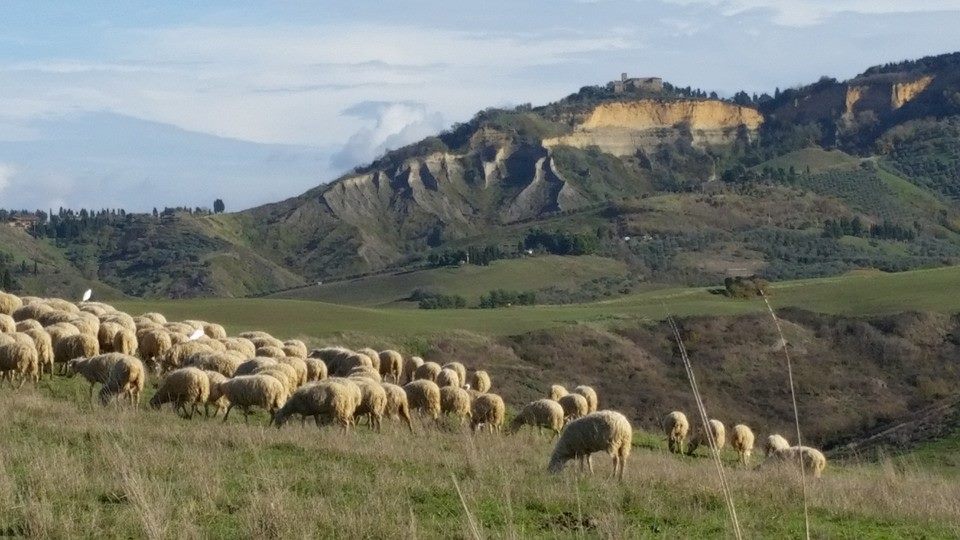
Agriculture and contemporary art, the perfect combination in Volterra
ENOGASTRONOMY / BRIDGES BETWEEN SARDINIA AND TUSCANY
Giovanni Cannas, the shepherd in love with art, has brought sculptures and installations among the fields where his flocks graze. From Sardinia to Tuscany, he aims to renew the bond between the two lands, distant geographically but close in values.
Many years ago, people used to ask me, “Do you feel more Sardinian or Tuscan?” Each time, I’ve responded the same way: “My parents came here 60 years ago with their sheep, and in this land, we found connections, starting from the ancient bridge of relationships and exchanges between the Etruscans and Sardinia. Then, millennia later, it was us who brought the knowledge of dairy to Tuscany.”
Speaking is Giovanni Cannas, producer of Pecorino from the Cliffs of Volterra DOP and director of the protection consortium. We stand overlooking a lunar landscape as he introduces me to this land that has welcomed his family for decades. Then, in the 1990s, he entered the scene and built his entrepreneurial story on the hills of Volterra, alongside his sister, shaping his philosophy as a contemporary farmer.
On one hand, there’s livestock farming and cheese production; on the other, agritourism, contemporary art, circular economy principles, and sustainable development. All of this can be found among the hills surrounding the Lischeto farm. And it’s art, with a sculpture by Mauro Staccioli, that welcomes visitors along the dirt driveway, leading them on a slow exploration journey to the stables and then to the tourist complex and restaurant.



